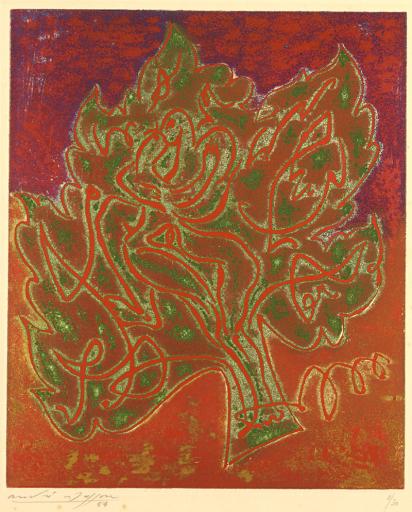Un Coupe sur une feuille (Couple on a Leaf), André Masson
Artwork Overview
André Masson, artist
1896–1987
Un Coupe sur une feuille (Couple on a Leaf),
1954
Where object was made: France
Material/technique: à la poupée; wove paper; color etching; aquatint
Dimensions:
Image Dimensions Height/Width (Height x Width): 308 x 258 mm
Sheet/Paper Dimensions (Height x Width): 403 x 324 mm
Image Dimensions Height/Width (Height x Width): 12 1/8 x 10 3/16 in
Sheet/Paper Dimensions (Height x Width): 15 7/8 x 12 3/4 in
Mat Dimensions (Height x Width): 19 x 14 in
Image Dimensions Height/Width (Height x Width): 308 x 258 mm
Sheet/Paper Dimensions (Height x Width): 403 x 324 mm
Image Dimensions Height/Width (Height x Width): 12 1/8 x 10 3/16 in
Sheet/Paper Dimensions (Height x Width): 15 7/8 x 12 3/4 in
Mat Dimensions (Height x Width): 19 x 14 in
Credit line: Gift from the Gene Swenson Collection
Accession number: 1970.0132
Not on display
If you wish to reproduce this image, please submit an image request



